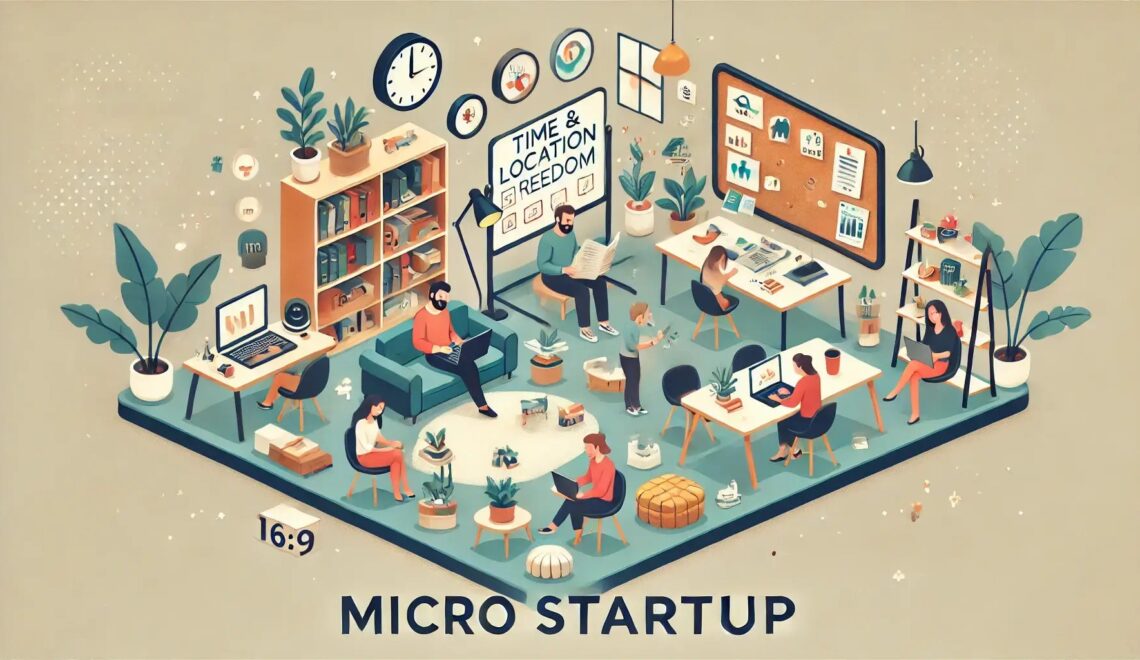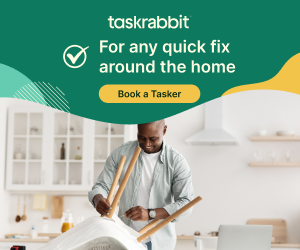
Micro Startup Culture: Solo Founders Go Global
The rise of micro startup culture is redefining entrepreneurship in 2025, with solo founders leading the charge. Armed with digital tools, global platforms, and agile mindsets, these one-person powerhouses are launching businesses that reach international audiences from day one. In this piece, we dive into how solo entrepreneurs are going global and thriving without the need for big teams or big budgets.
Intro: Why 2025 Is the Breakout Year for the Micro Startup Movement

-
The traditional venture-backed, 100‑employee model is giving way to lean, one‑person businesses armed with cloud tools and global distribution.
-
A Micro Startup can now reach millions with less than USD 1 000 in initial capital and zero full‑time staff.
-
Remote work, low-code platforms, and AI co‑pilots have democratized entrepreneurship—any skilled individual can become a global value creator overnight.
-
Solo founders are no longer anomalies; they’re a driving force of innovation, job creation (via contractors), and inclusive economic growth.
Micro Startup Momentum in 2025: Key Facts & Figures
-
Global count exceeds three million active Micro Startups; growth rate ~27 % YoY.
-
Average annual revenue per Micro Startup sits at USD 145 000, with profit margins as high as 65 %.
-
42 % of them operate across at least two international markets thanks to borderless e‑commerce and digital services.
-
Traditional SMB filings declined 8 % in major economies, signaling a shift toward smaller, more agile entrepreneurial structures.
Core Definition: What Exactly Is a Micro Startup?

-
A Micro Startup is a one‑person (or max two‑person) venture utilizing automation, outsourcing, and SaaS to deliver niche products or services.
-
Unlike freelancing, a Micro Startup builds scalable assets: SaaS apps, digital courses, subscription newsletters, indie games, and micro‑brands.
-
It relies on “No‑Ops” infrastructure—serverless hosting, automated billing, and AI customer support—to keep fixed costs near zero.
Technological Catalysts Powering the Micro Startup Boom
-
Generative AI enables founders to produce design, copy, code, and marketing materials in minutes.
-
No‑code tools like Bubble, Webflow, and Airtable let non‑programmers launch full apps.
-
Global payment APIs (Stripe, Wise, PayPal) remove friction for cross‑border sales.
-
Low-cost cloud stacks—Vercel, Netlify, Supabase—scale automatically with demand.
-
AI analytics dashboards provide real‑time revenue, churn, and cohort insights without data teams.
Economic Impact: Macro Shifts Triggered by the Micro Startup Wave

-
Diversifies economic activity by empowering under‑represented demographics—women, rural residents, retirees—to become founders.
-
Spurs hyper‑local supply chains as solo entrepreneurs contract local creatives, logistics partners, and micro‑factories.
-
Reduces unemployment spikes because laid‑off workers pivot into Micro Startup ventures within weeks.
-
Increases tax revenue resilience: millions of small revenue streams cushion against big‑company downturns.
Top Sectors Where Micro Startups Thrive
-
Niche SaaS (e.g., time‑zone converters, podcast‑hosting add‑ons).
-
Knowledge commerce: cohort courses, paid communities, and micro‑credentials.
-
E‑commerce micro‑brands using print‑on‑demand or dropshipping.
-
Indie gaming on platforms like Steam and itch.io.
-
AI‑generated stock media: images, videos, and voiceovers.
Toolkit for Building a Profitable Micro Startup in 2025
-
Domain & hosting: Namecheap + Vercel for USD 20/year.
-
Website builder: Webflow or Framer with built‑in SEO.
-
Payment stack: Stripe Checkout + Apple Pay integration.
-
Marketing automation: ConvertKit for newsletters, Buffer for social scheduling.
-
AI stack: ChatGPT‑powered content, Midjourney images, GitHub Copilot code.
-
Support: Zendesk AI chatbots or Crisp live chat with autoresponders.
Funding Models: How Solo Founders Finance Their Dreams
-
Bootstrapping through personal savings and immediate revenue reinvestment.
-
Advance sales and lifetime deals on platforms like AppSumo.
-
Community micro‑grants (e.g., Stripe Climate Grants, Indie Hackers funds).
-
Revenue‑based financing from Pipe or Capchase once MRR crosses USD 2 000.
-
NFT and token launches tied to future product utility (carefully regulated).
Case Study Highlights of Successful Micro Startups
-
Indie email tool hitting USD 80 000 MRR with one founder and contract designer.
-
Solo developer’s grammar‑checking browser extension topping two million installations.
-
Digital artist selling AI‑enhanced stock art bundles for USD 25 each, earning USD 250 000 in 18 months.
-
Ex‑teacher’s micro‑course platform reaching 9 000 paying students at USD 49 per seat.
Advantages Exclusive to the Micro Startup Path
-
Complete creative control—no investor board altering vision.
-
Ultra‑fast pivots, shipping new features in hours vs. corporate quarters.
-
Low overhead allows experimentation across multiple micro‑niches simultaneously.
-
Location‑free lifestyle—operate from a beach, mountain cabin, or co‑working hub.
-
Direct customer relationships fuel organic growth via word‑of‑mouth.
Challenges Solo Entrepreneurs Must Navigate
-
Burnout risk from juggling product, marketing, support, and admin.
-
“Lonely founder” syndrome—need for mastermind groups or accountability circles.
-
Scaling bottlenecks when demand outpaces solo capacity.
-
Platform dependency—algorithm changes can slice traffic overnight.
-
Legal compliance across global jurisdictions (VAT, data privacy, accessibility).
Strategies to Counter the Pitfalls
-
Automate first: Zapier and Make workflows reduce repetitive tasks.
-
Outsource wisely: hire fractional CFOs, virtual assistants, and specialized freelancers.
-
Build in public: share milestones on Twitter/LinkedIn to attract community feedback and beta users.
-
Diversify channels: mix SEO, newsletters, and social to mitigate platform risk.
-
Schedule digital detox and set non‑negotiable off‑hours to protect mental health.
Micro Startup Keyword Placement #1: Planning Your First Micro Startup—Idea Validation
-
Start with problem discovery interviews—10 potential customers describing pain points.
-
Test value proposition via a one‑page landing page and pre‑order form.
-
Aim for 50 interested users or USD 500 in pre‑sales before writing a single line of code.
Global Policy Responses & Ecosystem Support
-
Singapore and Estonia offer “e‑Residency” plus 0 % capital gains for digital Micro Startups.
-
EU Micro Grant initiative (EUR 10 k) for solo green tech founders.
-
U.S. IRS expands home‑office deductions, recognizing rise in micro entrepreneurship.
-
Accelerators like TinySeed and Calm Company Fund cater exclusively to small, profitable ventures.
Future Trends: Where the Micro Startup Revolution Heads Next
-
AI agents handling full customer journeys, leaving founders to innovate.
-
Token‑gated micro communities where users co‑own product roadmaps.
-
Inter‑startup barter economies—APIs trading data and utility instead of cash.
-
Microworker platforms matching founders with on‑demand fractional executives in minutes.
-
Decentralized autonomous Micro Startups managed by smart contracts.
Keyword Placement #2: Scaling a Micro Startup Without Hiring Full‑Time Staff
-
Gradually increase freelance roster—design today, marketing tomorrow, support next week.
-
Implement profit‑sharing agreements rather than salaried compensation.
-
Use affiliate programs and revenue splits to turn superfans into sales reps.
Community & Audience Building Essentials
-
Publish weekly transparent revenue reports—followers trust authenticity.
-
Host monthly workshops or live streams on niche pain points.
-
Build micro‑communities on Slack, Discord, or Circle for product feedback loops.
-
Leverage cross‑promotions with adjacent Micro Startup founders targeting similar audiences.
Digital Marketing Tactics That Work Best for Solo Founders
-
Long‑tail SEO articles answering hyper‑specific questions (cost: time, ROI: evergreen leads).
-
Viral Twitter threads sharing product-building lessons.
-
Short‑form videos on TikTok/Reels showcasing behind‑the‑scenes progress.
-
Partnership newsletters swapping shout‑outs with complimentary tools.
-
Paid retargeting ads capped at tight budgets to recover cart abandoners.
Keyword Placement #3: Measuring Success in Your Micro Startup Journey
-
Key metrics: Monthly Recurring Revenue, Churn, Customer Acquisition Cost, Lifetime Value.
-
Track “Time to First Dollar” and aim for <30 days post‑launch.
-
Celebrate micro‑wins—first testimonial, first USD 100 day, first 1 000 email subscribers.
Long‑Term Exit Options for Micro Startup Owners
-
Micro‑acquisition marketplaces (MicroAcquire, Flippa) list six‑figure deals.
-
Revenue‑share partnerships with larger SaaS wanting your niche customers.
-
Licensing IP to enterprises needing custom integrations.
-
Running indefinitely as a lifestyle asset generating passive income.
Empowering Under‑Served Regions Through Micro Startups
-
Low infrastructure needs make it ideal for founders in emerging markets.
-
Cross‑border payment rails eliminate legacy banking gatekeepers.
-
Online education resources (Coursera, Udacity) equip local talent with global‑ready skills.
-
Digital nomad visas encourage founders to build Micro Startups while traveling.
Tools & Communities Every Micro Startup Founder Should Know
-
Indie Hackers forum for peer support and case studies.
-
Product Hunt for launch amplification and user feedback.
-
Gumroad and Lemon Squeezy for selling digital products with built‑in VAT handling.
-
Fathom Analytics for privacy‑first metrics.
-
Tally Forms for lightweight user onboarding and surveys.
Mindset Shifts: From Corporate Cubicle to Micro Startup Freedom
-
Embrace “iteration over perfection”—ship, learn, repeat.
-
View failures as data, not defeat; each experiment informs next hypothesis.
-
Prioritize cash flow, not vanity metrics—profit is protection.
-
Seek mastery of one micro‑niche before expanding horizontally.
Final Takeaway: The Micro Startup Era Is Here to Stay
-
Solo entrepreneurs armed with tech leverage are collectively reshaping the global economy in 2025.
-
Every individual with expertise and internet access can turn problems into products faster than ever.
-
Whether you dream of a USD 1 000 monthly side gig or a seven‑figure asset, the Micro Startup model offers a path tailored to autonomy, agility, and impact.
-
The question is no longer “Can one person build a company?”; it’s “Which global challenge will your Micro Startup solve next?
















